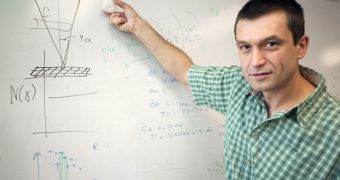Taking inspiration from a common household object, the Scotch tape, a researcher at the American space agency devised a new way of capturing hard X-rays. The approach uses an innovative, highly-specialized X-ray mirror, which was proposed by scientist Maxim Markevitch.
Working with X-ray optics experts at the NASA Goddard Space Flight Center (GSFC) in Greenbelt, Maryland, the researcher is currently trying to establish if fashioning a mirror dedicated to this objective out of plastics is a feasible option.
The low-cost instrument would be made from tightly rolled plastic tape. The early-stage idea is currently being supported by the NASA Center Innovation Fund, which is sponsoring Markevitch and his investigation.
“I remember looking at a roll of Scotch tape and thinking, was it possible to use the same design for capturing hard X-rays. I talked with a few people, and to my surprise, they didn't see any principal reasons why it couldn't be done,” he says.
At this point, the researchers are focused on testing a series of candidate materials that can support being rolled without breaking. Creating a mirror out of these materials is bound to be a significant technological challenge, the team says.
The very nature of X-ray photons makes them very elusive. As a result, any mirror aimed at detecting them needs to have a significant curvature, and has to be located inside a cylindrical optical assembly.
According to scientists, it's this specific geometry that allows high-energy radiation to skim the surface of the detectors, similarly to how a stone skips on the surface of a lake. At this time, building an X-ray telescope is a very time- and resource-consuming project.
“It's a lot of work fabricating these rigid shells and making sure they're properly aligned,” Markevitch says. In the future, astronomers will require even larger and more complex instruments, so the new approach to conducting this type of studies could prove to come in handy.
NASA already has the Chandra X-ray Observatory in orbit, studying soft X-rays. The Swift satellite has studied high-energy gamma rays, but it cannot produce images. “There remains a large and totally unexplored discovery space of faint, diffuse nonthermal astrophysical objects emitting at high X-ray energies,” the expert says.
The new idea could prove “game-changing for hard X-ray astronomy. It could significantly reduce the cost of building large mirrors, bringing within reach the possibility of building a mirror with 10 to 30 times greater effective area than current X-ray telescopes,” Markevitch concludes.

 14 DAY TRIAL //
14 DAY TRIAL //